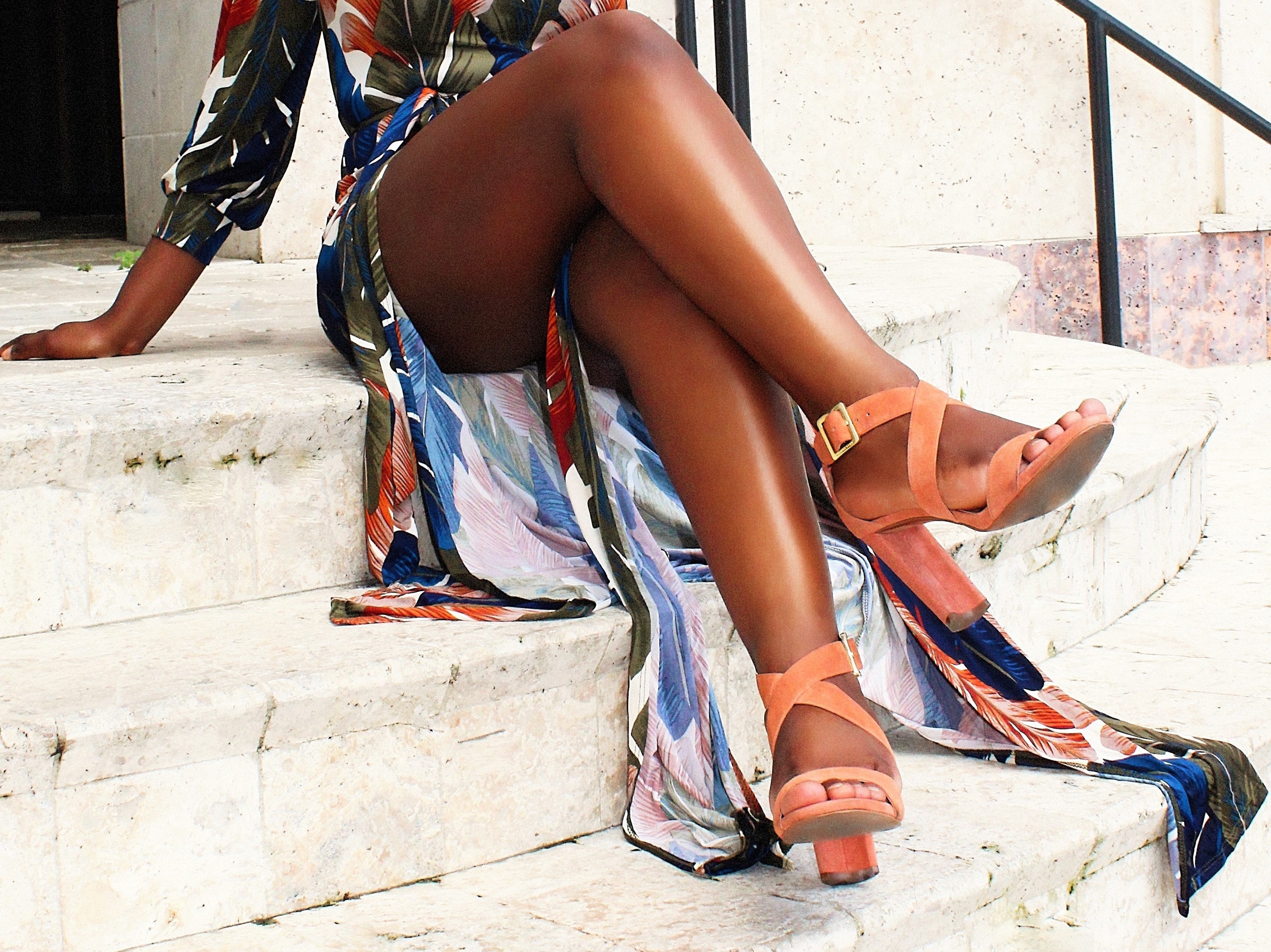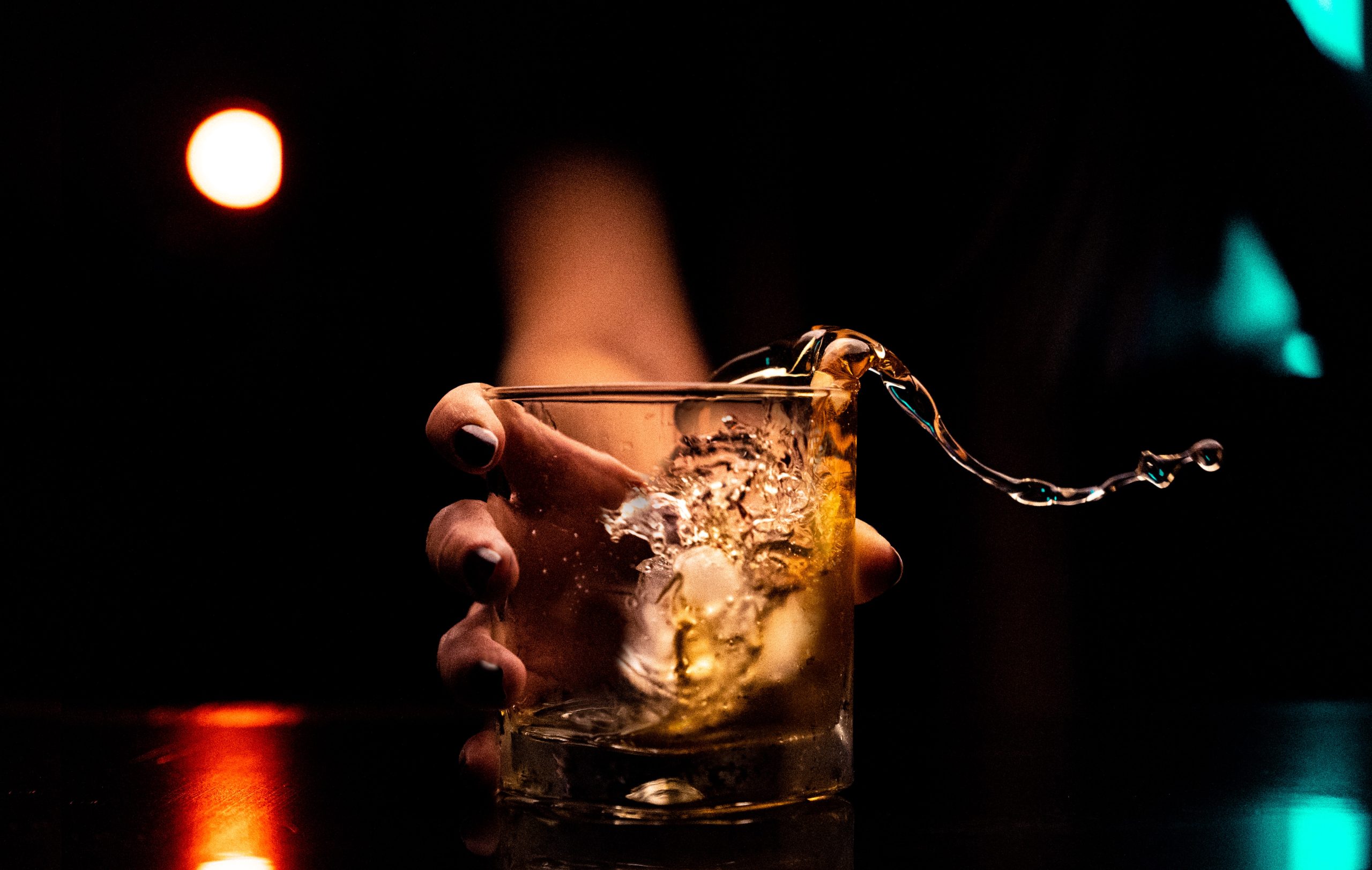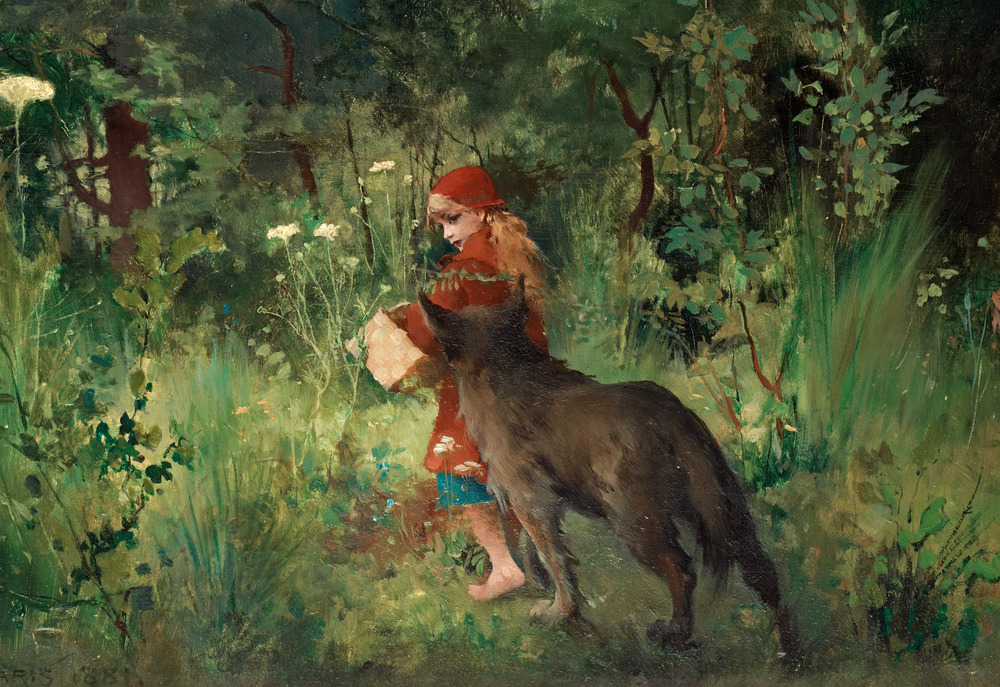Interviews
“How to Sit” Is Part Fiction, Part Essay, and All Black
Tyrese L. Coleman on the benefits of acknowledging shame and the perks of publishing on small presses

Tyrese L. Coleman’s How to Sit: A Memoir in Stories and Essays, follows a young Black woman’s coming of age in America. A finalist for the 2019 Pen Open Book Award, How To Sit blurs the line between fiction and nonfiction. In some sections, it is clear one is reading about the author Tyrese as she analyzes her DNA results, navigates a predominantly white institution, and endures a high risk pregnancy. In other selections, the protagonist is nebulous. Throughout Coleman’s voice is raw and real and powerful.
In addition to being an author, contributing writer at Electric Literature and the reviews editor of Smokelong Quarterly, Tyrese L. Coleman is also a wife, mother, and attorney. We spoke about writing as escapism, the benefits of acknowledging shame, and the perks of publishing on small presses like Mason Jar.
Deirdre Sugiuchi: In the author’s note, you write that How to Sit “plays with the line between fiction and nonfiction as it explores adolescence, identity, and grief, and the transition between girlhood and womanhood for a young black woman seeking to ground herself when all she wants is to pretend her world is fantasy.”
In some ways How To Sit reminds me of bell hooks’ Wounds of Passion. Can you discuss the decision to play with this line? Did you have any models?
Tyrese Coleman: I don’t know if it was a conscious thing, a switch where I decided at some point that this was what I was going to do. I was just starting to write professionally, or rather, more than just for myself and my own self-enjoyment, and what came out were these pieces of auto-fiction or essays that related to these topics of identity and maturing and childhood. When the first couple of iterations of this book wasn’t going anywhere, two things happened: one, I discovered that there had been collections from famous writers that included fiction and nonfiction in the same space. And second, I was reading The Things They Carried for the millionth time and realizing that what I was creating was similar.
Ultimately, though, I really wanted to create a version of Jean Toomer’s Cane, which has always been my favorite book because of the risks Toomer took in writing something seemingly inaccessible, dense, and genre-bending. A modern version of that, for me, was Citizen by Claudia Rankine. When I realized that, yes, I do want to play with what the word “memoir” means and what is fiction and what is non-fiction, those were the two books that I carried around with me everywhere—the things I carried (sorry, couldn’t resist). Those were my models.
DS: Can you talk about the need the narrator has to pretend that the world is a fantasy in order to survive?
TC: Other than the obvious feeling of wanting to be someone other than yourself, the escapism from books, television, movies, art comes in the brief exodus from whatever is happening in the outside world. The escape is where the pleasure lies, at least for me, and it’s a world that I often think is better than reality, even if I’m reading a dystopia. There is the reassurance that you can get up and walk away from your consequences. If you are in the hands of a capable story-teller, then it’s almost as if you are being cradled, like a child secure in their parent’s embrace, there are no worries, and in this space, you don’t look like you, you aren’t poor, you aren’t traumatized, and at any moment, when those things start to happen and the tension becomes too much, you can close the book until you are ready to deal with it. What a wonderful life that must be! I want that. I want to be a part of a story. Or rather, I want to be the character in the story that is being read. Because there is the option to dip in and out of the stakes. Real life is continuous stakes. There are no page breaks, no white space, no chapter endings and a brand new scene on the next page. You must deal. Sometimes you have to go through life pretending that, in the morning, there will be another scene.
DS: You write about the sexual abuse of young girls, particularly young black girls, and the continuing impact of abuse on a woman’s life. It’s something I think about a lot, the impact of trauma, both as a survivor and as a public school educator. You created art out of horrific situations. Can you talk about the importance of breaking this silence and your process?
TC: I don’t know, I don’t want to talk for everyone, but for me, my trauma is a part of who I am. I carry it around in my body because it happened to this body and this is the only body I have. It was never about breaking a silence, because everyone who knows me understands this about me. My friends have known this since we first met. I’ve been talking about it for years. It’s one of the first things I told my husband when we started telling secrets. I am not ashamed of what happened to me because I understand it is not my fault, though, that revelation took time and years of me punishing myself in various ways.
I am not ashamed of this body and everything it has suffered.
But, yes, I am not ashamed of this body and everything it has suffered so what is it but a thing for me to speak about it or write about it. This is fact. I was molested. For other women who do feel shame, though, that is what I would challenge them to confront first, rather than the idea of breaking the silence. Because if you aren’t addressing the shame, then speaking on it isn’t going to be from an authentic source or frame of mind. And then, in essence, you’re going to perpetuate the same trauma on to yourself. You have to be able to confront the bold-faced truth of what happened to you in the most frank terms. And then understand, that you did not do this to yourself. Someone did this to you. Then maybe, you can talk about it.
DS: At your AWP panel, “My Memoir’s First Year,” you mentioned that one of your goals in writing was to create art. Can you expound on this?
TC: Like I mentioned briefly, Cane is my favorite book. It’s hard to read, at least it was for me. I didn’t understand it, really, until I’d read it many many times. It was one of the first books that required that much work from me. And I immediately recognized that it wasn’t for every one. I always wanted to create something that felt special in that way. It is my own skewed interpretation of what art is. A beautiful piece that gives you something new with each enjoyment of it, though it may not be to everyone’s taste.
Small presses are putting out the work that the big publishers were afraid to back.
Art, though, is not commercially viable because it is not universally palatable. I knew that this book was going to be that, especially since I never told people whether they were reading fiction or nonfiction. I knew that people would be like, “what the hell is a memoir in stories and essays?” or “no, honey, that’s just a collection of stories and essays, it is not a memoir.” This was the goal for this book, but it may not be the goal for another project.
And, I hope I haven’t walked myself into a corner with this, because I don’t think that just because a lot of people like something it cannot be art or artistic. I just think I want to write something that withstands universal taste, that can be read at any time and any place and be relatable in some respect. I hope that is what I did.
DS: At that same panel, you said that “Small presses are really doing the hard work of diversifying literature.” Can you discuss this?
TC: When I first had the concept for this book, an agent asked me “but, what shelf would that go on?” and I knew that attempting to publish through the traditional route would be a waste of time. One, this is a book that discusses sex, masturbation, health, bodies, grief, and reads very very Black. Two, it is lyrical. I’ve never seen a book like mine ever commercially available and the closest I’d seen to it was published by an indie press.
When I took a survey of who was publishing what, I saw my friend Donald Quist publishing with a small press. I saw Feminist Press publishing our voices. I knew Roxane Gay’s and Alexander Chee’s first books were with small presses. And I realized that small presses were putting out the work that the big publishers were afraid to back because there is no guarantee that the risk would be worth it. Most of us publishing with small presses are used to rejection. I’ve learned that a lot of times when things are rejected, it’s not based on quality, but rather the “I don’t get it.” To me, when those are the words they use when rejecting you, it means you are doing something innovative and special. Those folks rejected with the “I don’t get it,” are the ones small presses embrace. They get it.
Now, I will say that there are risks. We all know what just came out about Curbside Splendor not paying royalties. And that is not the first instance of a small press being called out for not paying their writers, so we do have to be cognizant of who we give our art to. And, because small presses are publishing writers who are from the most vulnerable groups, it is even more important to be diligent when it comes to these matters. Join a local union, hire an attorney if you don’t have an agent, question the contract, damn it, READ the contract and know what is up and what is owed to you. Don’t just be grateful that someone is publishing you. Expect to be published. Look, the white lady being served poorly is going to call the manager. Damnit, we got to learn not to just be happy we’re getting service. We need to learn how to ask for the manager too!
DS: Social class is often ignored in America, but you do an incredible job of highlighting social class differences throughout How to Sit. Can you discuss writing about social class?
TC: I grew up on a dirt road in a house that was smaller than my first apartment out of college with three generations of my family. I found a mouse in my shoe once, a snake in my drawer, and many a bird would fly into our home. There were times we had to boil water for washing and for a long time, my mother made below the poverty line though she had and still works for the same company for many decades. You know, when you live in this world, you don’t know how bad it is until you experience something else. So, does that mean it was bad at all? I didn’t have a whole lot, but at the time, it wasn’t as big of a deal, so was it actually a problem? Yes and no, I guess is the answer to that. Yes when I need to go to the doctor and almost fall out from walking pneumonia because we couldn’t afford a doctor bill. No when I had a roof over my head, food to eat, and water to drink.
Real life is continuous stakes. There are no page breaks, no white space, no chapter endings and a brand new scene on the next page. You must deal.
When I left the country, went to college and saw the world I grew up in with fresh eyes, that is when I saw what others must’ve seen. This is when I saw what I saw…what I was starting to think about that world and the people I left back home. At some point, I had to admit to myself that I became judgemental, became “cute” and “bougie” and all the things other people had called me in the past when I did things they deemed stuck up. I gave into those class distinctions. It allowed me to write from both perspectives after the fact. I am ashamed of the college version of me who felt shame over where she came from and thought she had lived enough to judge anybody. But, because I thought those things, I was able to translate them into my stories. And I think it takes removal from the situation in order to write about it honestly.
DS: V-Day was such a powerful essay! I wanted to hug you and tell you “It’s not your fault!” I’m a mother too. I constantly feel guilty. Can you discuss writing about mother guilt?
TC: Parenting is just an exercise in overcoming daily guilt. As long as I’m a parent, I will always have a well of guilt to pull sustenance from. I’m the type of person who would rather confront these things than let them linger. Every parent feels guilty about one thing or another. Might as well talk about it.
DS: Who are your favorite authors? What writing excites you?
This is a book that discusses sex, masturbation, health, bodies, grief, and reads very very Black.
TC: I have like 8 million favorites, but I am partial to Southern writers like Kiese Laymon and Jesmyn Ward. Heavy and Sing Unburied Sing were two books that made me feel simultaneously overwhelmed by jealousy and so inspired that I needed to write something immediately. I’m excited by voice and my ability to relate to the text in some ways. I am also really into Romance these days. I highly recommend pretty much every book written by Alyssa Cole.
DS: Can you talk about your next project and your shift to fiction?
TC: I don’t know if its a shift to fiction. I’ve always written fiction. Maybe a shift to less autobiographical fiction, though, I’m sure when my book comes out people will find a way to ask me whether or not its based on my life because, well I’m a woman and that’s what they do to us. But, I am working on what I like to call a “literary romance novel.” My goal is to write a book that makes you happy at the end of it, but isn’t dictated by genre. As you can tell about me, I hate rules.
I want to write a book about love, about race, about grief, about family, about the South and about good sex (because goddamn, why is sex so damn awful in literature outside of romance novels…?). So, that is what I’m going to do.









